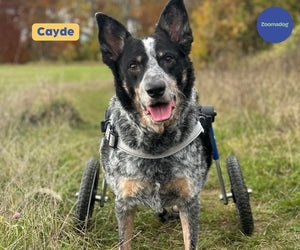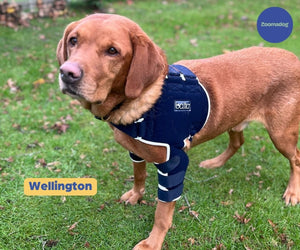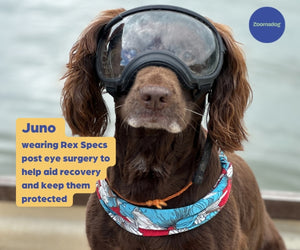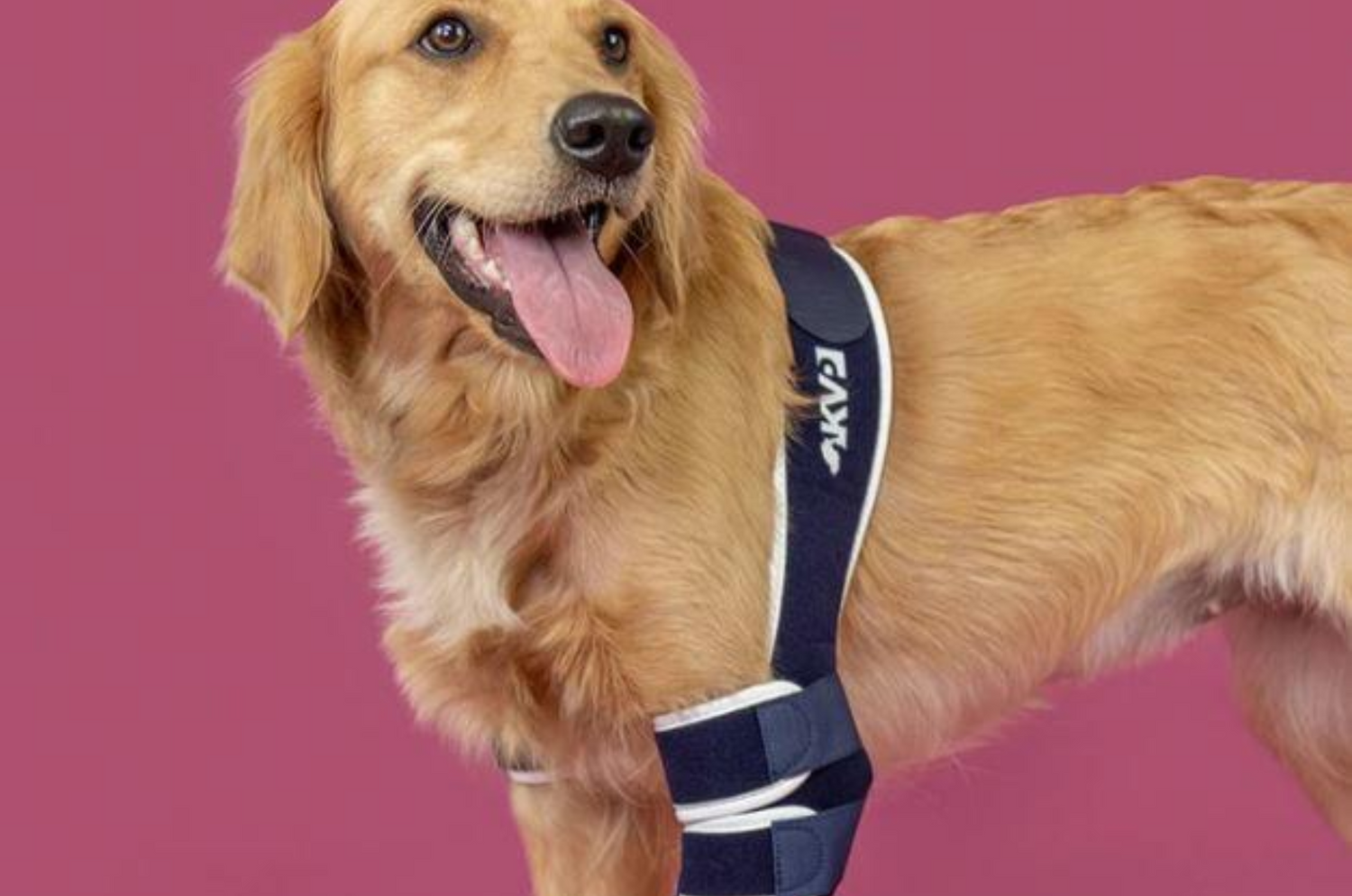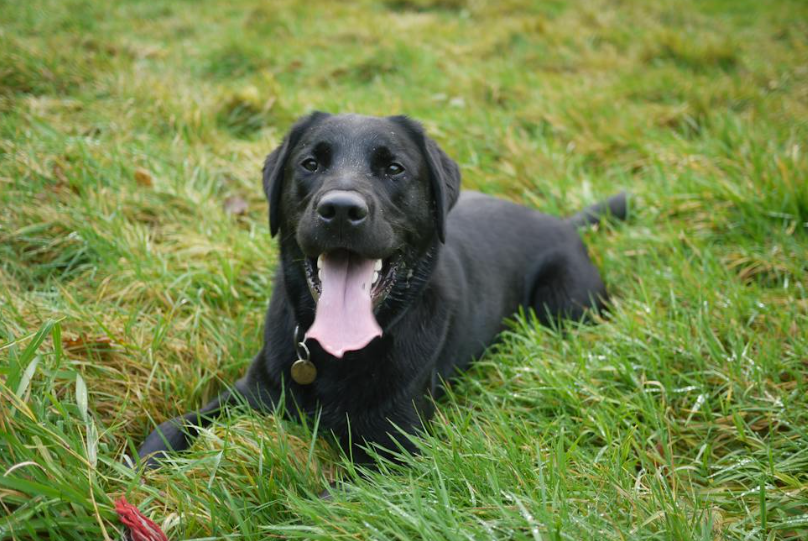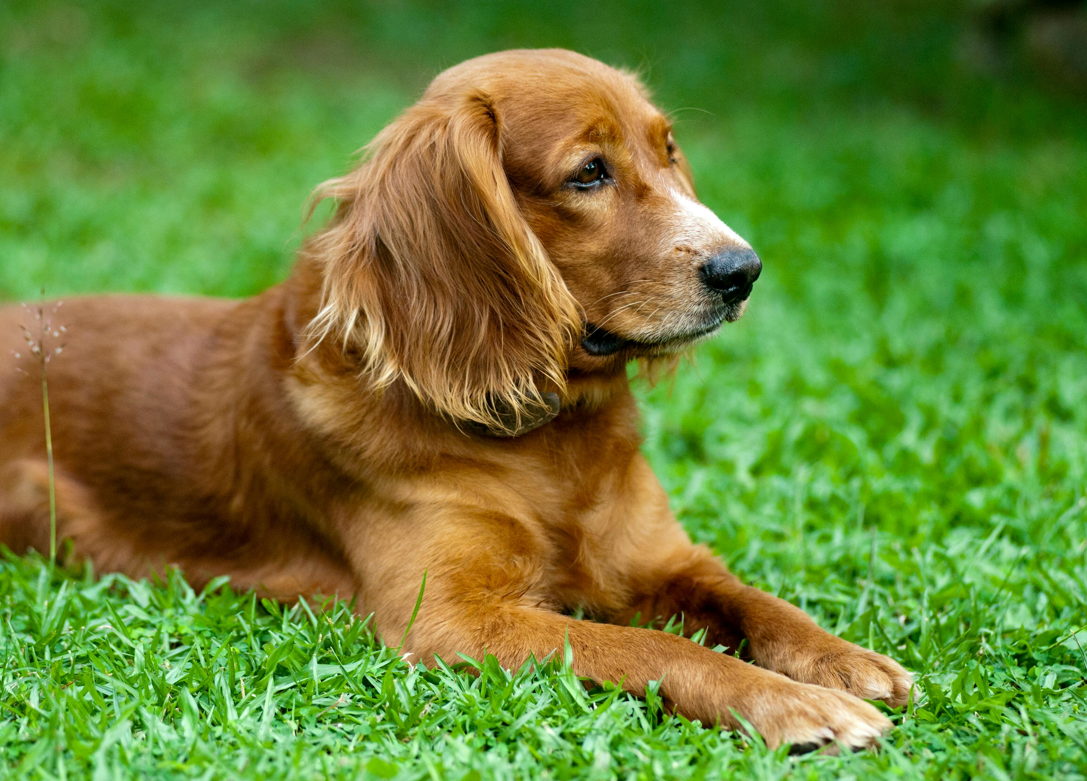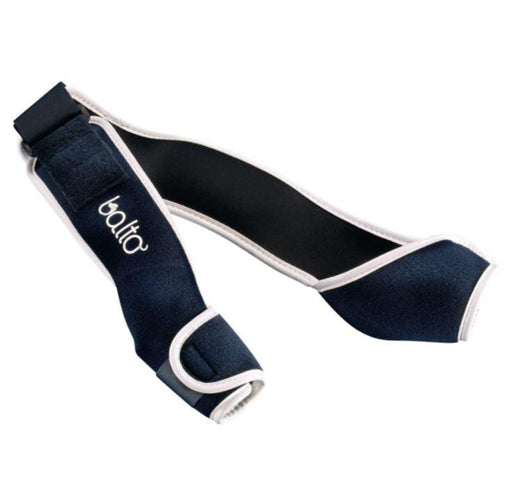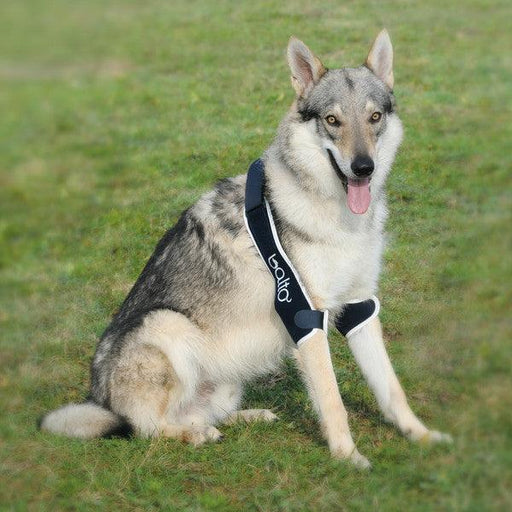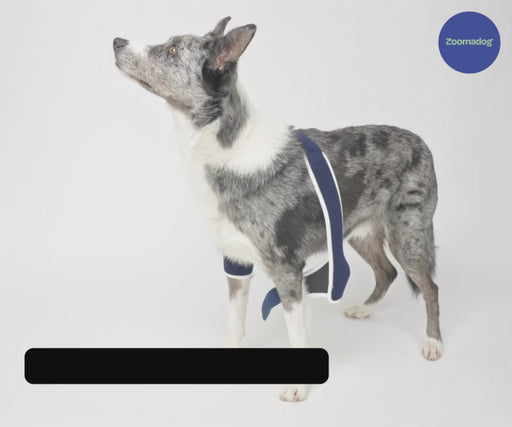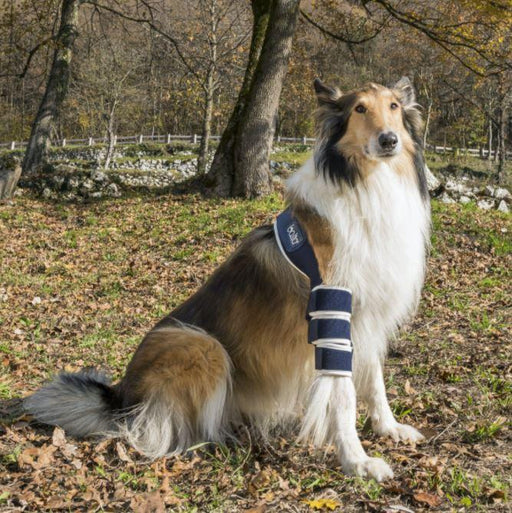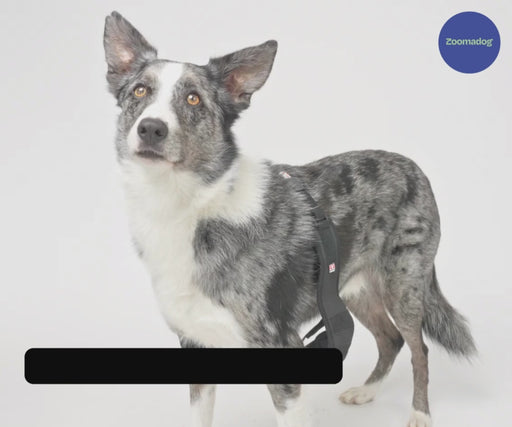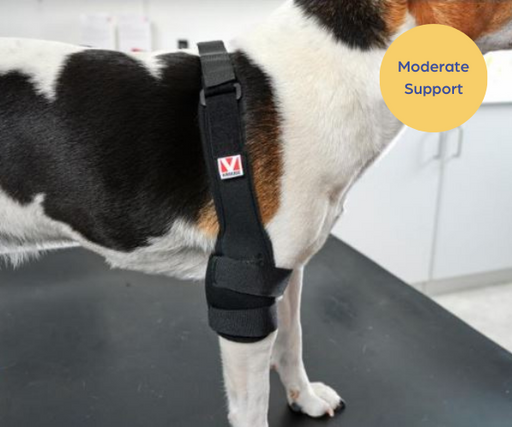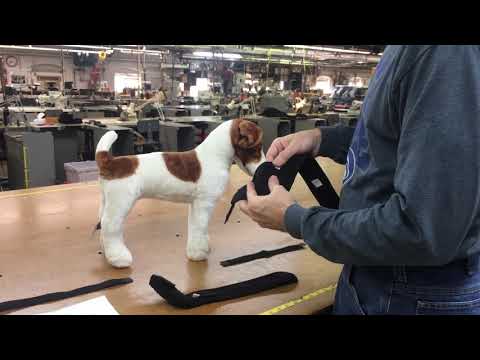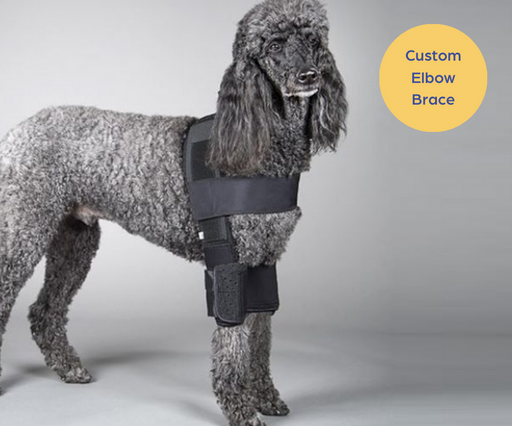The treatment for elbow dysplasia depends on the severity of the condition and the individual dog's circumstances. Treatment can range from conservative (non-surgical) management to surgical intervention.
Non-surgical options can involve giving your dog anti-inflammatory pain killers, weight management, controlled exercise and/or applying a supportive brace which can help to support their elbow joints.
If your dog suffers with elbow dysplasia, it is really important to keep your dog at an ideal weight. Any extra weight that they carry, directly increases the strain on their elbow joint(s), thereby making symptoms worse and increasing the amount of pain which your dog will experience. Furthermore, research has shown that if your dog is overweight, or receives excess calories while young and growing, their chance of developing elbow dysplasia is greatly increased or if they are already genetically predisposed to it, they it will develop it to a greater degree.
If your dog has already developed elbow dysplasia, it can be a difficult balance of making sure they receive enough exercise (especially when trying to controlled their weight) and making the problem worse by over-exercising. You will need to make sure your dog stays fit by doing the ‘right’ type of exercise. Regular, short lead walks are ideal. Prevent your dog from jumping, skidding, chasing, racing around and walking or running for longer periods.
If you are looking for supportive Dog Elbow Braces, we recommend looking at two in particular. The Balto Soft is for a single elbow, and Balto Soft Plus is a double elbow brace. The Balto Soft offers excellent moderate support designed to protect the dog in cases of hygromas, sores, calluses on the elbow and bursitis. The Balto Soft Plus Elbow Brace is a double brace designed to protect both your dogs’ elbow. The second brace which we recommend and which receives excellent customer feedback, is the Kruuse Rehab Pro Dog Elbow Protector. This brace cushions and compresses the elbow joint, providing warmth and support to the affected area.
Both are well made quality dog elbow braces which can be worn all day, indoors or outdoors.
Surgical options can include arthroscopy, osteotomy (surgical correction of bone deformities) or joint replacement in severe cases. Post-surgical care involves many of the steps which conservative management does; weight management, controlled exercise and anti-inflammatories. Applying a supportive elbow brace post-operatively can also help your dog’s recovery and support their joint more fully.
Elbow dysplasia will always lead to the development of arthritis in your dog and so it is recommended also to give your dog a joint supplement to slow the progression of this and keep your dog more comfortable and active for longer.



